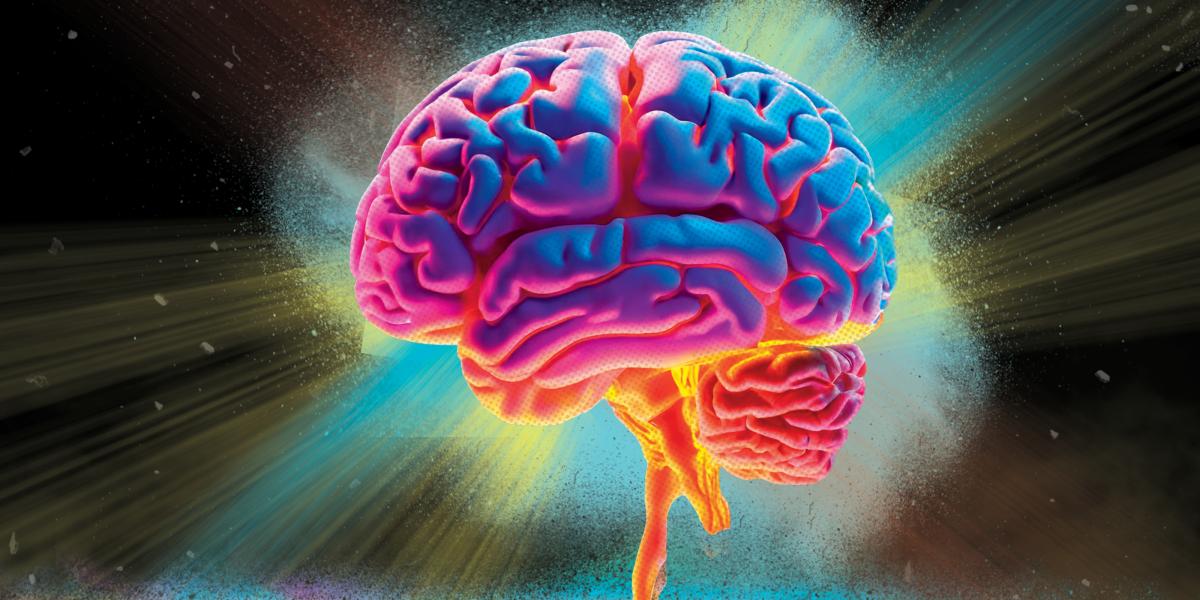Before Pain Turns Chronic
Persistent pain’s “fingerprints” could alert doctors to patients at risk and inform treatment strategies.
Anybody preparing for surgery knows there will be discomfort involved afterward—but what if that pain endures long after the procedure is over? By some estimates, anywhere from 20% to more than 50% of patients will end up struggling with chronic postsurgical pain, a condition that is both debilitating and difficult to manage medically.
The nationwide research consortium Acute to Chronic Pain Signatures (A2CPS) aims to develop tools to identify these patients before surgery with the goal of customizing treatment and minimizing the risk of chronic pain. As one of several A2CPS principal investigators, Biostatistics Professor Martin Lindquist will draw on brain imaging data—alongside complementary analyses from specialists in genetics, neuroscience, metabolism, and other fields—from thousands of patients slated for surgery. “The idea is to figure out: is there a signature that can predict in advance whether somebody will get chronic pain?” says Lindquist, PhD, MSc.
Pain is a highly subjective sensation and notoriously difficult to quantify and study. In a typical hospital visit, doctors must rely on a patient’s self-reported numerical pain rating to assess their level of discomfort. As an alternative, Lindquist and colleagues have been peering directly into the brains of people experiencing pain in order to understand the structures and neuronal networks that produce this sensation. Among his preferred tools is functional magnetic resonance imaging (fMRI), which can provide a visual readout of changes in blood flow and metabolism that directly correlate with changes in brain activity.
In a pioneering 2013 study, Lindquist collaborated with Tor Wager, PhD, and colleagues to produce one of the earliest examples of a pain-specific fMRI signature, elicited by applying uncomfortable levels of heat to the skin of healthy volunteers. To decouple the physical aspect of pain from the emotional distress that inevitably accompanies it, they assessed the latter independently by imaging people’s brains as they thought about a romantic partner who had rejected them. “It turned out that if you looked at brain regions that were activated by the heat versus seeing this person that broke your heart, that activated the same brain regions,” says Lindquist. But there were also important differences, and because fMRI can image the whole brain, their team could see that these overlapping regions were also interacting with other distinct areas of the brain in the context of physical pain.
While the 2013 study involved 113 participants, A2CPS will study nearly 3,000 participants who are scheduled to undergo either knee replacement or a thoracic surgery intervention. Lindquist’s team at the Bloomberg School will be coordinating collection and analysis of data from this project, which aims to generate a comprehensive profile of every patient before and after surgery. Lindquist says that A2CPS researchers will be collecting both functional and structural brain imaging data at multiple timepoints, and adds that other participating centers will be exploring molecular markers of gene expression and metabolism as well as clinical histories and biographic data from patient surveys. The goal: Stitch these diverse data together to identify multidimensional “fingerprints” that reliably predict the risk of acute postsurgical pain becoming chronic.
Identifying these associations from fMRI is no mean feat. Imaging data are extremely complex, and even subtle variations between experiments—including the use of different instruments by different personnel—can introduce confounding artifacts and potential false-positives. Cutting-edge artificial intelligence techniques such as “deep learning” offer a tempting solution for extracting relevant patterns, but “those tend to be good for what we call ‘Google-sized’ data,” Lindquist says. When these tools are trained on small or insufficiently diverse datasets, irrelevant patterns can readily be amplified to generate misleading results.
For example, attempts to apply AI to radiology have been undermined by algorithms’ tendency to seek out shortcuts. In these cases, the AI may accurately distinguish cases of severe disease, but does so by “cheating”—recognizing severe pneumonia based on the presence of a chest tube in the X-ray rather than lung damage, for example. So, Lindquist prefers to stick with more reliable—and explainable—statistics-based methods when possible.
A2CPS is years away from producing a final analysis, but the early work with fMRI biomarkers offers some cause for hope. David Seminowicz, PhD, an fMRI specialist at the University of Western Ontario who has collaborated with Lindquist, is dubious that such a costly and labor-intensive test will be applied for diagnosis. “We might be able to use diagnostic biomarkers to confirm that this looks like fibromyalgia versus some other musculoskeletal pain,” he says. “And that can be useful, but it’s probably less useful than identifying people at risk of developing chronic pain.” In that latter context, fMRI and associated biomarkers could have a considerable impact, giving clinicians a heads-up that a surgery patient might require even closer attention than usual or a different postsurgical treatment protocol.
“It might be that certain people have different rehabilitation programs,” says Lindquist, adding that the use of certain analgesics like ibuprofen has also been linked to chronic pain, so patients expressing high-risk biomarkers identified by A2CPS may need alternative medications. And for elective surgeries, elevated risk of chronic pain could directly guide a patient’s decision-making process. In these situations, the expense of fMRI could be justifiable, says Seminowicz. “When you look at the cost of chronic pain, especially over the years, it easily pays for itself.”
Lindquist is especially excited about the longer-term prospects of creating a rich data resource that other colleagues can probe for new insights about how chronic pain arises. “The database is going to live forever, and people are going to find stuff that we didn’t find,” says Lindquist. “It could be that in five years, someone who’s just training right now grabs the dataset from the web and is able to find something that nobody ever thought of—and that’s pretty cool.”
